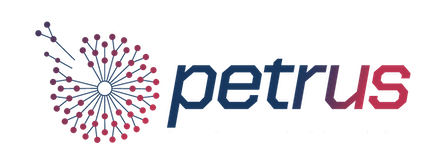
How Is IoT Revolutionizing Textile Manufacturing In India?
The Internet of Things is revolutionizing the textile manufacturing industry by streamlining processes for the users. It enables better handling of big data in textile machinery which is enormous. With it, companies reduce losses and improve efficiency in inventory management. The technology also helps in minimizing waste and improving the quality of products.
The following is why IoT is revolutionizing the textile industry in the country.
Improves Productivity and Reduces Cost
The use of sensors allows manufacturers to track operational conditions and optimize their inventory. With the help of the sensors, these machines share data with each other, enabling a condition-based maintenance, which is vital for manufacturing equipment.
Assists in the Marketing and Sales Procedures
It helps textile manufacturing companies to use big data effectively. With this information, the textile industry can understand the market better, predict the reaction of customers to new products, and minimize the life of products.
Reduces Errors and Improves Quality
By integrating IoT sensors into textile machinery, manufacturers map different parameters. For instance, it can allow them to reduce the number of errors that occur during spinning process. The use of IoT in textile manufacturing in India has improved the quality of products and reduced the Time-to-Market for the products.
Controls Energy and Labor Costs
Several benefits of IoT in textile manufacturing include the reduction of labor and energy costs. Using IoT in textile manufacturing will also help reduce variations in the finished product. The increased efficiency and improved customer satisfaction will make IoT an excellent investment for the industry. So, IoT in India is truly taking the country’s clothing industry to the next level.
Effectively Tracks and Analyzes Production
The benefits of IoT in textile machinery are numerous. Its use in textiles will allow companies to track and analyze the production of a particular type of fabric. It can also increase the efficiency of a company. The data from IoT devices will help manufacturers analyze the condition of a certain machine. The Internet of Things is revolutionizing textile manufacturing in India.
Ensures Quality Control
Using IoT in the textile industry will also allow for better quality control. Better access to real-time data will enable manufacturers to tie their restocking strategies to improve productivity. Furthermore, IoT in the textile industry will allow manufacturers to track the time it takes to make a particular garment.
Enables Real-Time Mapping & Monitoring
Another major advantage of IoT in textile manufacturing is the potential to monitor and map various processes and components in real-time. Connected devices can also send alerts for defective goods or other problems that require attention.
LMW’s SPINCONNECT
When textile manufacturing is confronting the idea of IoT, we have introduced a web-based application to monitor plant utilization and productivity levels. SPINCONNECT, the remote monitoring system, includes a mobile application for monitoring and report generation. It has various modules, like the Production module, Energy module, Health monitoring module, Spindle monitoring, and Roving Stop Motion (YBS & RSM) module.
We have included robotics in our shop floor, that reduces the down time, and increase productivity & scalability. Not alone in manufacturing LMW has AI and automation integrated in many of its business processes as well. We help textile manufacturers to change to new and innovative technologies with our products.
Our products are recognized globally, and everyday LMW is expanding its business around the world. Our engineers are always on their foot to keep our customers satisfied and happy.
Endnotes
There are many advantages to IoT in the textile industry, but few people know how to use it. Basically, IoT allows manufacturers to integrate all processes in-house, thereby reducing their costs and improving speed. Additionally, the real-time flow of data means that everyone has the same information at all times. With it, companies reduce losses and improve efficiency in inventory management. The technology also helps in minimizing waste and improving the quality of products.
Sustainable Manufacturing Consulting
Get your sustainable manufacturing journey right, the first time
